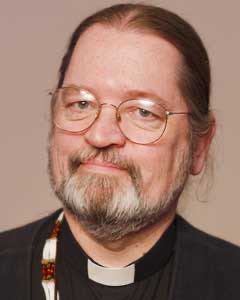 “How are you doing in these strange times?” I hear it often. The word “strange” suggests we are in a time that is out of ordinary and hard to interpret. I would suggest, however, that this is a time that reveals something we have forgotten.
“How are you doing in these strange times?” I hear it often. The word “strange” suggests we are in a time that is out of ordinary and hard to interpret. I would suggest, however, that this is a time that reveals something we have forgotten.
Jesus described this age, between his first and second advent, as a time of labour pains (Mark 13:8). It is an image that Paul uses to describe Creation’s yearning for the World to Come (Romans 8:22) and his own struggle to see Jesus become a reality in the communal life of discipleship (Galatians 4:19). We live in the time of the birth pains of the Messiah who will bring a New Heaven and a New Earth.
The image of birth pains illuminates every aspect of Creation and our life within it. It is a call for us to follow Jesus into his total identification with the suffering—human and otherwise—of this age. But it is also a word of hope. In it we can see a trajectory of life and light. We have become, we see in the Eucharist, the first-fruits of this New Creation (James 1:18).
Many of the Christian churches, especially in the West—and most especially in the West’s colonial aspect—have walked away from this image. It is, however, an aspect of our life in Creation that is so powerfully revealed in our time. With the pain of the pandemic, we have seen the truth of our common humanity, the truth of our communion with Creation. It’s a revealing that is also a calling to renewed discipleship and a renewed humanity.
John in his Book of Revelation sees this mixture of suffering, glory, and hope as the shape of our life in Christ and the consequence of our following him. Like Jesus, we identify with the sufferings of humanity and Creation, show the miraculous power and love of God, and await and hasten the coming of God’s reign in a New Heaven and New Earth—a reality that is pregnant in every aspect of this time (Revelation 1:9).
Indigenous peoples, here and around the world, are living close to the messianic realities of this time, in both pain and promise. The sufferings of the time of colonization—poverty, sickness, and marginalization—have, in many ways, accelerated in this pandemic. But, in the midst of it, there has been a birth of hope, a movement towards freedom and life. This is the call of the self-determining Indigenous Sacred Circle, but it is certainly not its call alone. May the life of our crucified and risen Messiah find in us a pathway, a way of life, that makes real, in this world, the life of the World to Come.





